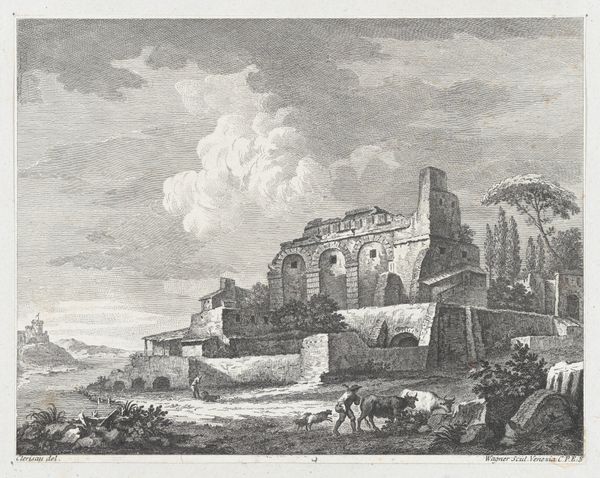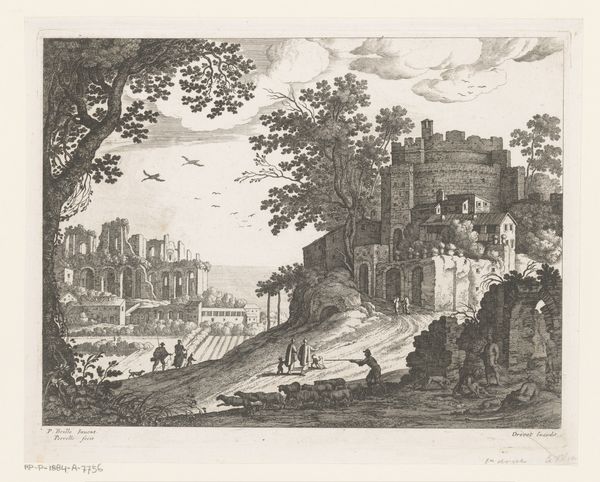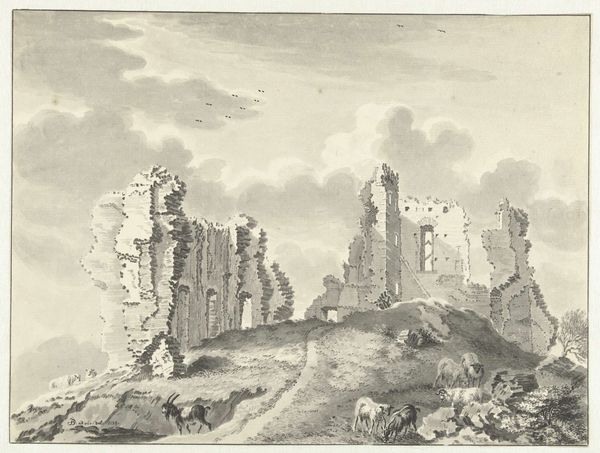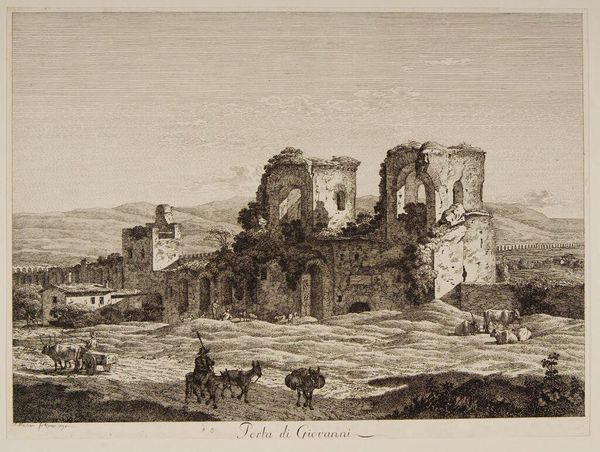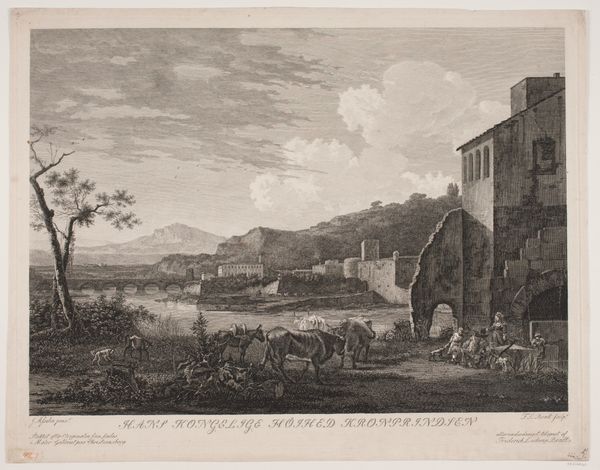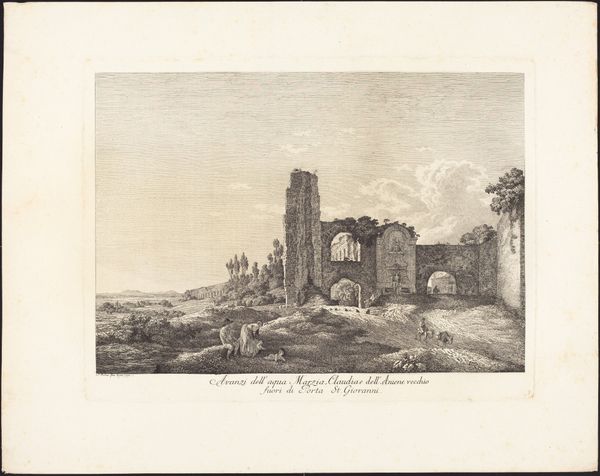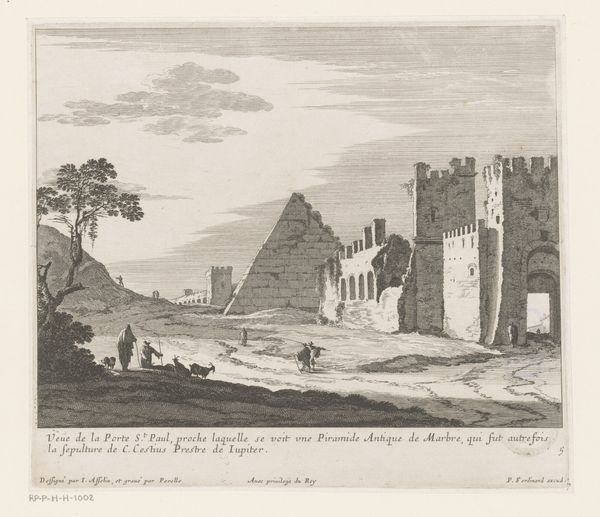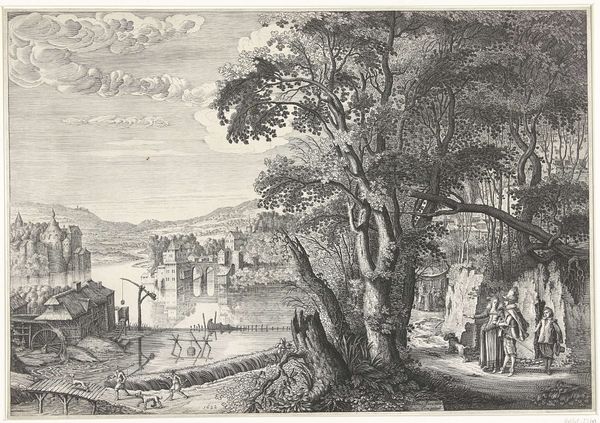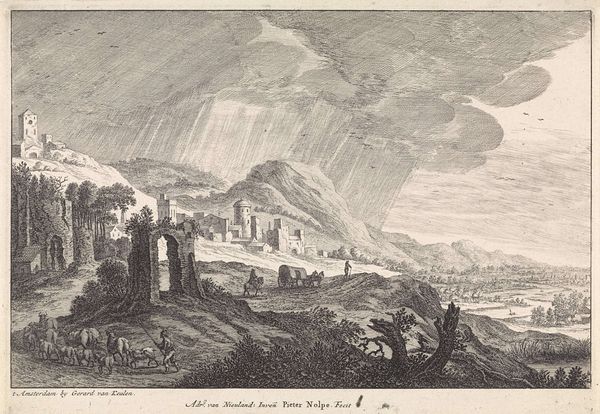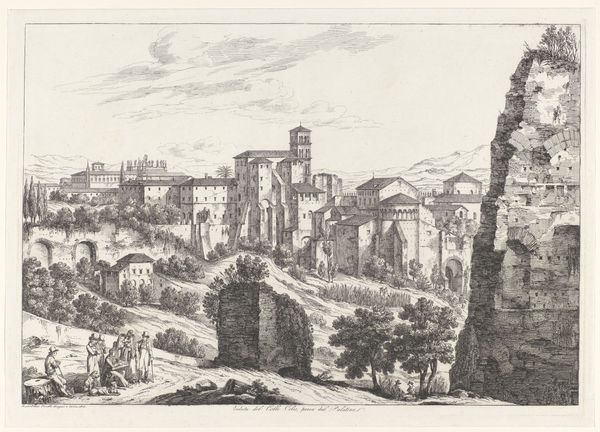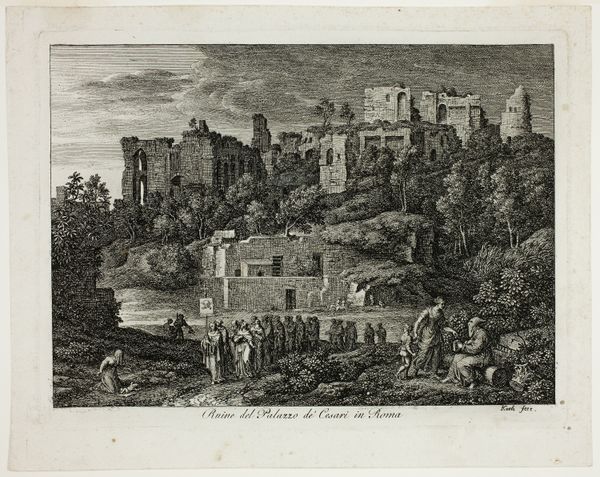
print, engraving, architecture
# print
#
landscape
#
classical-realism
#
engraving
#
architecture
Dimensions: height 394 mm, width 546 mm
Copyright: Rijks Museum: Open Domain
Editor: This print, "Theater van Taormina," was created by Vincenzo Alloja between 1781 and 1820. It's an engraving that depicts classical ruins, almost picturesque, like a stage set itself. How do you interpret this work within its historical context? Curator: Well, firstly, this image appears to romanticize the ruins, portraying them as beautiful and serene rather than as symbols of lost power. Considering its creation during a period of intense political and social upheaval, it prompts questions about escapism and cultural identity. Does this romantic vision serve to distract from or perhaps comment on the turmoil of the era? How might its audience, accustomed to societal hierarchy and rigid social order, respond to a vision of crumbling societal edifices? Editor: That's an interesting angle. I was mostly focusing on the artistry, the technique of engraving, the way the artist captures the texture of the stone... Curator: Precisely. And we shouldn’t divorce technique from context. Engraving as a medium allowed for wide dissemination of images, making this vision of Taormina accessible to a broad public. This in itself implies the growth of democratic cultural exchange and perhaps hints at shifting societal structures, no longer held up by aristocratic patronage. In what way did this democratizing potential affect the perception of ruins at that time? Editor: So, by circulating images of a shared past, could it have cultivated a kind of collective identity, irrespective of class or social standing? Curator: Absolutely. And by showcasing the ruins not as tragic relics but as beautiful, integrated parts of the landscape, Alloja subtly challenges traditional narratives of power and decay. Do you agree? Editor: Yes, definitely. I see it now – it's not just about the ruins themselves, but what they represent at a specific time and for different people. It’s about power dynamics being subtly undermined, replaced by an almost bourgeois appreciation for beautiful nature. Curator: Exactly! And these shifts in societal vision were facilitated and captured by its chosen artistic medium. Thanks to artists like Alloja.
Comments
No comments
Be the first to comment and join the conversation on the ultimate creative platform.

